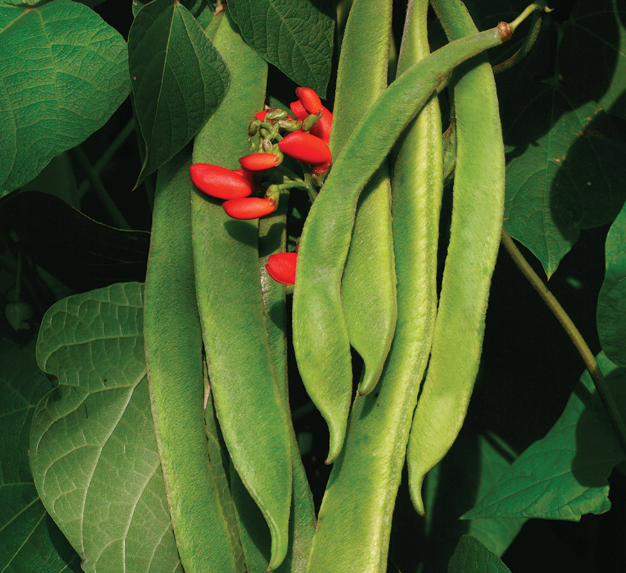Runner beans are easy to grow and worth the time. They have great flavour when done correctly.
Choose the best type
There are many different types, make sure you pick the best one for your needs, or grow a few different types to have a variety of runner beans in your garden. Some might prefer cold temperatures, while others will thrive in the heat.
How to grow at home
You will need a sunny spot in your garden, healthy soil and something to support them, like bamboo. You should plant the seeds in small pots around April, to plant out around May. You could also directly sow the seeds in the ground in May/June. Sowing indoors will give you better germination and earlier beans, plus the young plants will be protected from snails and other pests. When the seedlings are developed, they will be able to be planted out around June. Keep them well watered, and make sure the pots are large to prevent drying out fast.
Care for your crops
Runner beans need strong support. You should use at least 4 long canes, push each one lightly into the soil in a circle shape, spacing them properly. Connect all of the tops together, then plant one runner bean at the bottom of each cane. As they grow, tie new shoots to the canes to help them hold on. When the runner beans reach the top, pinch out the growing tip of each one to encourage wider growth. Beans do need a good amount of water, so make sure to regularly give them enough water.
Pest issues
Young plants are vulnerable to slugs, so it is ideal to grow more than you will need, then plant them out when they are big. Use some slug pellets, place copper rings around the stems or cover the soil with crushed eggshell, as this will prevent slugs and snails from going near the young plants.
Harvesting the beans
Runner beans should be ready to pick 3-4 months after sowing. They will be the best at 14-19cm long, they might be worse at longer lengths. Picking regularly will encourage them to make more flowers, meaning more young beans. Leaving old beans on the plants will stop flowering.

